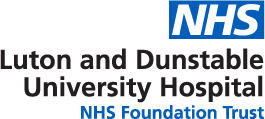This is a procedure that can be recommended after breast conserving surgery or breast reconstruction to improve the results. It can be used to fill in dents or areas of volume loss in the breast after breast conserving surgery, soften the ages of breast reconstructions, or help to reduce capsule formation (see implant reconstruction complications). It may also be suggested to improve the quality of the chest wall skin after a mastectomy if delayed reconstruction is being considered.
It is carried out under a general anaesthetic and usually takes 1-2 hours. It involves injecting a salt solution into areas where you have some fatty tissue (usually thighs, flanks or abdomen) and then using liposuction equipment through small cuts in the skin to take some fat out. This is then washed and prepared to get rid of any blood before being injected back into areas where it is required. The fat has to be injected in very small amounts at a time through fine needles as it will need to pick up a blood supply from the surrounding area.
Afterwards you are likely to feel pain at the area where the fat has been removed, and there may be a lot of bruising. Normally you will stay overnight in case you need strong painkillers, although if you have had the procedure before and feel able to, you can go home the same day. It is helpful to have some support underwear to put on as soon as you can after surgery to help the bruising to settle. There will be small scars on the area where the fat has been taken from and the area where it has been injected into. There will be swelling at the areas where the fat has been taken and also where it has been injected. We try to remove the fat in a smooth layer, but sometimes there may be some lumpiness at the site where fat has been taken.
This is a procedure which is likely to need repeating to get a final result. Not all of the fat will survive, and sometimes lumpy areas or cysts can form if the fat doesn’t pick up a blood supply (this is known as ‘fat necrosis’). This happens in about 5% of people having lipomodelling and may require investigations and biopsy to confirm that the lump is only due to fat necrosis. Fat necrosis can also cause small flecks of chalk (micro-calcification) to appear on a mammogram even if no lump can be felt, and this might also need investigation.
If you have a breast implant in the area where the fat is being injected there is a small risk of implant damage or infection. For this reason you will be given a course of antibiotics around the time of surgery. If the implant is obviously damaged during the surgery we will replace it at that time.
Fat contains ‘stem’ cells which are cells that can develop into other types of cell. When lipomodelling was first started there was concern that transferring stem cells into an area where there had been a cancer might encourage the cancer to return. No evidence has been seen that this is a risk and lipomodelling is now a recommended treatment by NICE (National Institute of Clinical Excellence). There is a theoretical risk of damage to deep structures, such as bowel or lung; this is very rare.

